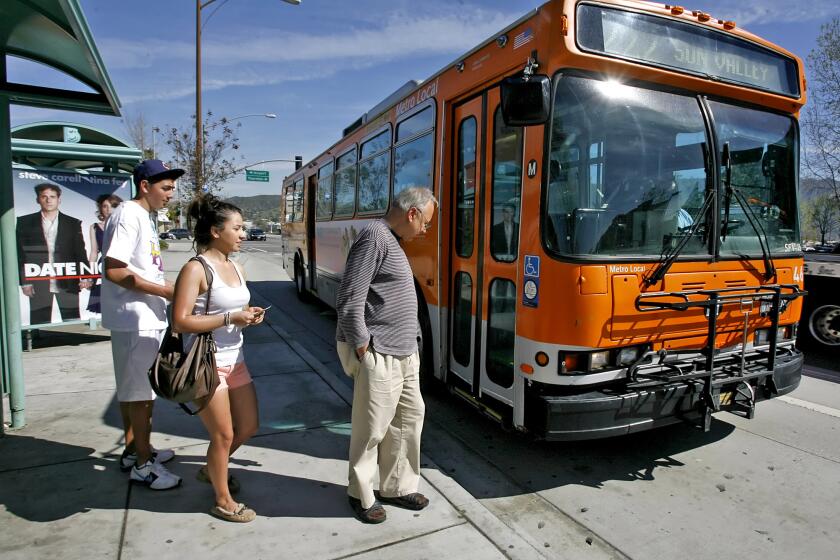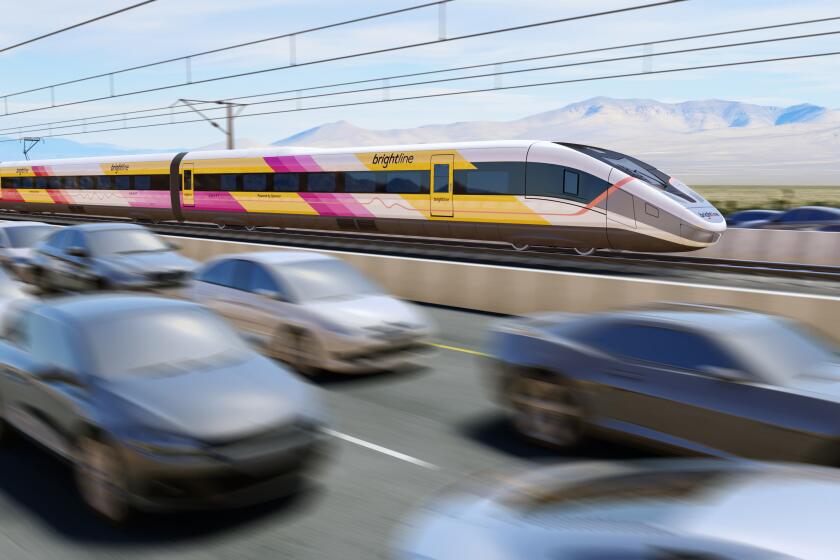Worker Car Pools Ineffective, Study Says : Transportation: Since most auto use is not tied to work, there are better solutions to traffic congestion, researcher contends.
Most automobile usage in Orange County and throughout the Southland is not work-related and this means regulations forcing people to car-pool to work will do little to relieve traffic congestion, a new study contends.
Better solutions are to be found through improved traffic management, freeway expansion, and tolls charged during peak traffic periods, concluded Robert A. Kleinhenz, a Cal State Fullerton professor who conducted the study using U.S. Department of Transportation and Census Bureau data.
What’s more, “better bus service is by far the preferred alternative to new rail service, which will undoubtedly be more costly, less flexible and underutilized,” Kleinhenz wrote in a report released this week.
Among Kleinhenz’s findings:
* Non-work travel accounts for 78% of all “person trips” and 65% of all “person miles” traveled in Southern California. Three people traveling in a single vehicle a distance of five miles counts as three person trips and 15 person-miles.
* For privately owned vehicles, 72% of all trips and 63% of all miles traveled are non-work-related.
* Shopping and other family or personal errands account for nearly twice as much travel as work trips, or about 42% of all person trips.
* Ride-sharing is much more prevalent during personal trips than for work trips.
* The private vehicle was the mode of choice for 87% of all person trips, work and non-work combined, with only 1.8% choosing public transportation.
Kleinhenz, a professor at Cal State Fullerton’s Institute for Economic and Environmental Studies, said that although personal trips are more likely to involve ride-sharing, it’s more important to reduce the number of miles traveled each day by vehicles overall than to boost occupancy rates.
Kleinhenz said that separate, accurate figures for Orange County alone could not be produced from the available data, since the number surveyed locally was too small. But he was confident that the non-work travel in Orange County exceeds the regional average, because there are more cars per household here and median household incomes are higher, which generate more personal travel for shopping and recreation.
“In short, while commuting is a key feature of our everyday lives, non-work travel activity is a larger and faster-growing part of personal travel,” Kleinhenz said.
Kleinhenz’s findings were made public at a time when the Orange County Transportation Authority is planning a $2-billion, elevated urban rail system, with a link between South Coast Plaza and Disneyland favored in recent technical evaluations.
OCTA Chief Executive Officer Stan Oftelie said Friday he agrees with Kleinhenz that “we shouldn’t have a single focus” on work trips. But, Oftelie added, “one of the big problems in Orange County is peak-hour traffic, which is work-related.”
Although the county’s transportation system works well at times other than morning and evening rush hours, the length of those peak periods has been growing, according to Caltrans officials. For example, some freeways are crowded late into the evening.
Still Oftelie said he’s not sold on tolls for peak periods, because results from the first projects aren’t in yet. Beginning in 1995, tolls will be charged on new lanes being added to the median of the Riverside Freeway between the Riverside County border and the Costa Mesa Freeway. A similar project is under way in San Diego County.
Claudia Keith, spokeswoman for the South Coast Air Quality Management District and a former OCTA official, acknowledged that work trips are the focus of anti-smog efforts such as the AQMD’s ride-sharing rules.
But she said that’s partly because it’s much more difficult to affect shopping or recreational trips.
More to Read
Start your day right
Sign up for Essential California for news, features and recommendations from the L.A. Times and beyond in your inbox six days a week.
You may occasionally receive promotional content from the Los Angeles Times.






